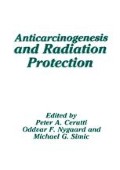Abstract
Reactive oxygen species such as hydrogen peroxide, superoxide radical, and hydroxyl radical are formed during aerobic respiration (1). These reactive oxygen species can react with vital cell components such as the cell membrane, protein, as well as DNA, potentially leading to mutagenesis and cell death (1). In Escherichia coli. repair endonucleases. such as exonuclease III (2, 4) and endonuclease IV (3) appear to be involved in the repair of oxidative damages in DNA. Further, endonuclease III was shown to recognize oxidative base damages (4).
Access this chapter
Tax calculation will be finalised at checkout
Purchases are for personal use only
Preview
Unable to display preview. Download preview PDF.
References
G. Cohen and R.A. Greenwald. Oxy Radicals and Their Scavenger Systems. Vol II. Elsevier Biomedical, New York. 1983.
Y.W. Kow and S.S. Wallace, Exonuclease III recognizes urea residues in oxidized DNA. Proc. Natl. Acad. Sci. (USA) 82:8354–8358 (1985).
R.P. Cunningham, S.M. Saporito, S.C. Spitzer and B. Weiss, Endonuclease IV (nfo) mutant of Escherichia coli. J. Bacteriol. 168:1120–1127 (1986).
H.L. Katcher and S.S. Wallace. Characterization of the Escherichia coli X-ray endonuclease, endonuclease III. Biochemistry 22:4071–4080 (1983).
K-H. Paek and G.C. Walker, Defect in expression of heat-shock proteins at high temperature in xthA mutants. J. Bacteriol. 164:1309–1316 (1986).
S.B. Farr, D.O. Natvig and R. Kagoma, Toxicity and mutagenesis of plumbagin and the induction of a possible new DNA repair pathway in Escherichia coli. J. Bacteriol. 165:763–770 (1985).
S.B. Farr, R. D’Ari and D. Touati. Oxygen-dependent mutagenesis in Escherichia coli lacking superoxide dismutase. Proc. Natl. Acad. Sci. (USA) 83:8268–8272 (1987).
B. Demple, H.L. Halbrook and S. Linn, Escherichia coli xth mutants are hypersensitive to hydrogen peroxide. J. Bacteriol. 153:1079–1082 (1983).
L.J. Sammartano and R. W. Tuveson, Escherichia coli xthA mutants are sensitive to inactivation by broad spectrum near-UV (300-to 400-nm) radiation. J. Bacteriol. 156:904–906 (1983).
B. Weiss. In: The Enzymes. (P.D. Boyer Ed.) Vol. XIV pp. 203–231. Academic Press, New York, 1981.
R. Wu, G. Ruben, B. Siegel, E. Jay. P. Spielman and C.D. Tu, Synchronous digestion of SV40 DNA by exonuclease III. Biochemistry 15:734–739. (1976).
S. Henikoff, Unidirectional digestion with exonuclease III creates targeted breakpoints for DNA sequencing. Gene 28:351–359 (1986).
B. Demple, A. Johnson and D. Fong, Exonuclease III and endonuclease IV remove 3’ blocks from DNA synthesis primers in HzOs-damaged Escherichia coli. Proc. Natl. Acad. Sci. (USA) 83:7731–7735 (1986).
R. Roychoudbury and R. Wu, Novel properties of Escherichia coli exonuclease III. J. Biol. Chem. 252:4786–4789 (1977).
M. Liuzzi and M. Talpaert-Borle, A new approach to the study of the base-excision repair pathway using methoxyamine. J. Biol. Chem. 260:5252–5258 (1985).
Author information
Authors and Affiliations
Editor information
Editors and Affiliations
Rights and permissions
Copyright information
© 1987 Plenum Press, New York
About this chapter
Cite this chapter
Kow, Y.W., Ide, H., Wallace, S.S. (1987). Mechanism of Action of Exonuclease III from Escherichia Coli. In: Cerutti, P.A., Nygaard, O.F., Simic, M.G. (eds) Anticarcinogenesis and Radiation Protection. Springer, Boston, MA. https://doi.org/10.1007/978-1-4615-6462-1_21
Download citation
DOI: https://doi.org/10.1007/978-1-4615-6462-1_21
Publisher Name: Springer, Boston, MA
Print ISBN: 978-1-4615-6464-5
Online ISBN: 978-1-4615-6462-1
eBook Packages: Springer Book Archive

